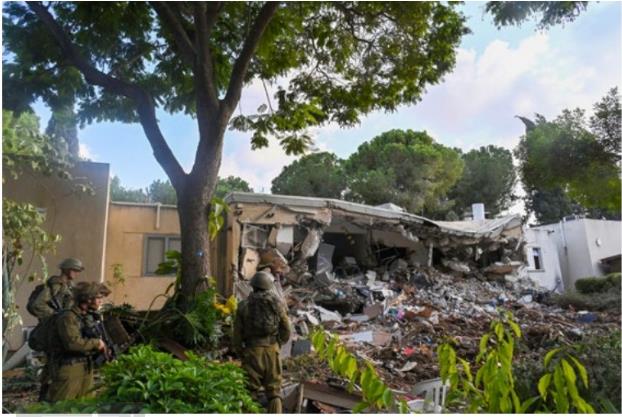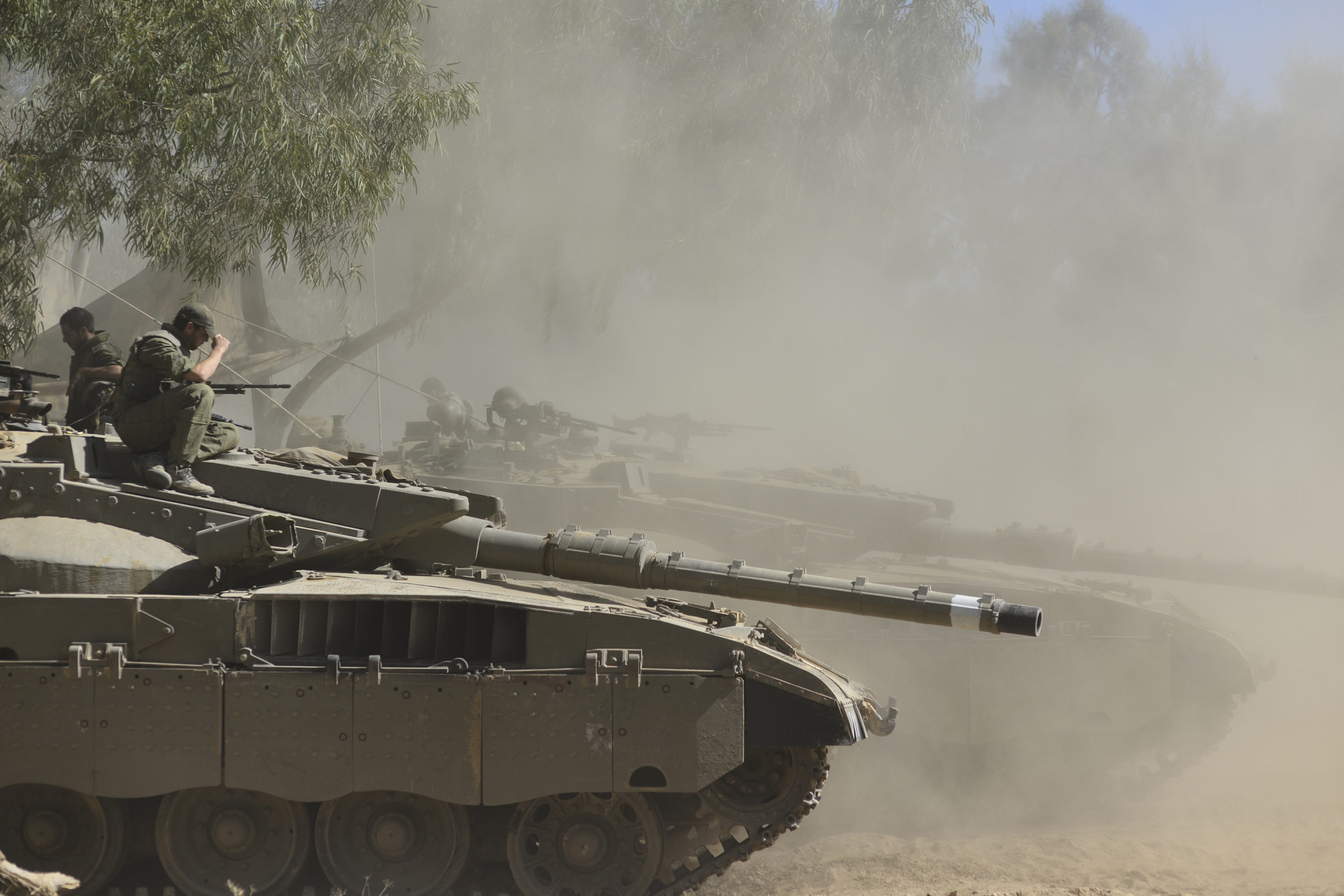The Israeli Military’s Real Failure
by Yagil Levy
The prevailing assumption in the media discourse is that on October 7th, Israel was taken by surprise when Hamas squads launched an attack on the Gaza-Israel border. This event challenged the intelligence community’s perception that Hamas had been effectively deterred. It also raised questions about the efficacy of border defenses, backed by technological systems. To better understand the origins of these perceptions and the failures they created, it is necessary to delve into the unique role of the Israel Defense Forces (IDF) in Israeli politics.

In 2020, the IDF Chief of General Staff, Aviv Kochavi, introduced an ambitious multiyear plan called “Momentum,” built upon “The IDF Strategy” developed by his predecessor, Gadi Eizenkot in 2015. In this strategy, the IDF prioritized an offensive approach aimed at achieving a rapid resolution in the event of a major enemy attack. When presenting his plan, Kochavi voiced criticism directed at both his predecessors and the political leadership, asserting, “The IDF is an army that possesses tremendous power but, at the same time, the length of time needed to vanquish [the enemy], and the price required by this, have led Israeli policy to present only limited war goals in recent decades.” Kochavi, in this manner, outlined an ambitious objective: the “concept of a thrust to victory,” marking a shift from mere deterrence to a focus on achieving a decisive victory. In pursuit of this goal, the military invested significantly in the development and acquisition of advanced weaponry systems.
A significant aspect of this shift is the discourse developed in the military command and its dialogue with the public which exhibits a strong belief in the power of advanced technology to eliminate the need for political solutions. This perspective is exemplified in the writings of Brigadier General Eran Ortal, the commander of the IDF’s Dado Center, tasked with “developing the IDF’s operational art and systemic thinking.”
For Ortal, the central concept behind the multiyear plan was to reframe Israel’s reality as confronting “rocket-based terror armies” and, accordingly, to establish a new approach for achieving decisive victory, using the technological advancements of the “Fourth Industrial Revolution.” This involves, as Ortal wrote, “a new quality of combat-integration of air, land, intelligence, electro-magnetic, cyber, and other dimensions,” relying on “a reconnaissance screen-based on squadrons of UAVs belonging to tactical forces, synergy of intelligence and sensing means, all of which is connected to joint databases and effective information extraction systems,” aimed at negating the enemy capabilities.
Ortal asserts that “complex problems need complex solutions,” referring to military systems. Strikingly, his analysis contains no mention of settling conflicts through political means or the inherent limitations of using force. This tone is even more pronounced in the Hebrew version of the Dado Center Journal, the primary intellectual platform for the army’s senior members, where the term “political” is hardly mentioned. Alternatively, it suggests that the intricate political problems within the conflicts involving Israel, Palestinians, and the Lebanese, which contribute to an escalating conflict with Iran, are being perceived as issues that can be resolved through sophisticated weaponry systems. War, in this context, is viewed as a competition between machines rather than between human or political wills.
However, this perspective cannot solely be attributed to the inherent nature of military thought. What is crucial to understand is the distinctive role of the military in Israeli politics. The period following the Second Intifada (2000), and especially the re-election of right- wing leader Benjamin Netanyahu as Prime Minister in 2009, is characterized by the preservation of a political-territorial status quo without a clear political objective beyond maintaining that status quo. The political dialogue with the Palestinians died. Consequently, the IDF was drawn into this political vacuum. Its role extends beyond protecting Israeli assets to uphold the status quo. Typically, the military’s role is to maintain a status quo for a limited period to preserve politicians’ flexibility to work towards a political solution. In this case, the IDF also serves as a provider of “legitimation services” for the politicians.

To gain a better understanding of these legitimation services, it is important to go back to the late 1980s when the First Intifada erupted. IDF Chief of General Staff Dan Shomron resisted political pressure to suppress the non-lethal Palestinian uprising with overwhelming force. He believed that military means alone couldn’t resolve the Intifada, and advocated for political intervention, instructing troops to exercise restraint. Shomron recognized the limitations of relying solely on military force. Chief of General Staff Gadi Eizenkot somewhat echoed this approach in 2015-16. He tightened rules of engagement in the West Bank to prevent a third Intifada while pushing back against right-wing politicians’ demands for a more aggressive stance. In other words, the IDF challenged, rather than legitimized, the politicians’ approach.
However, the military command appears to have learned a different lesson since then. It now believes that acknowledging the limitations of using force in the Israeli-Palestinian conflict is detrimental to the military’s reputation, as evident in the right-wing’s criticism of Eizenkot. Consequently, the military has evolved into a new role since the late 2010s, fostering the belief that threats can be eliminated through the use of sophisticated force. This approach reduces the likelihood of political challenges that could disrupt the established political-territorial status quo. Such challenges may arise from the belief that a situation exists for which there is no military solution. This military rhetoric, to some extent, further reinforces the notion that the conflict is unsolvable.
Legitimation services of this kind are particularly crucial for a right-wing leadership to counter the challenge of the center-left. The IDF has historically been associated with the secular middle class, which leans toward the center-left. In exchange for these services, the IDF receives generous resources to build its technological military capabilities and is granted operational freedom.
This approach traps the military in its own rhetoric. It promises solutions to complex political problems because not doing so might negatively affect its status and resources. This, in turn, hinders the IDF from offering an alternative perspective that underscores the counterproductive nature of excessive force, which can motivate Gazans to seek ways to overcome the limitations imposed by Israel, as they have recently done. The assumptions about deterrence and the efficacy of technology for border protection directly result from the discourse cultivated by the IDF as part of its unique legitimation services.
Alternatively, if we draw from the debate about American military thinking that intensified after the wars in the 2000s, Major General Robert Scales highlighted the role of psycho- cultural factors as lessons to be learned from those wars. In these new conflicts, which revolve around cultural perceptions of victory and defeat, technology is just one of the factors influencing the outcomes. Scales, along with Lieutenant General Paul Van Riper, argued that in the end, “war is a contest of human wills, not machines…”

Regardless of the outcome of the current conflict, it is clear that the existing political-territorial status quo is untenable. The Palestinian issue can no longer be sidelined by the Israeli leadership. As recently emphasized by President Biden, the confrontation between Israel and Hamas should pave the way for a two-state solution, with his assertion that, “There’s no going back to the status quo as it stood on October 6.” In essence, the IDF has not met its objectives.
The perspective offered in this article illuminates not only the origins of this shortcoming but also underscores the deep-seated mistrust between the military and civilian leaders who have been beneficiaries of the IDF’s legitimation services.







